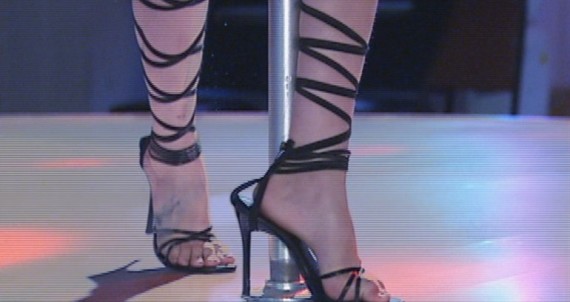Federal Judge Awards Strippers $10,000,000 In Labor Dispute
The labor laws apply no matter what business you're in.
A Federal Judge in Manhattan has ruled that a strip club in New York City owes millions of dollars in back pay to its dancers:
Rick’s Cabaret, a strip club in Midtown Manhattan, owes more than $10 million in back pay to about 1,900 dancers who performed there without being paid hourly wages, a federal judge ruled on Friday.
The judge, Paul A. Engelmayer of the Southern District, had decided last year that Rick’s had treated the dancers as though they were employees and should have been paying them at least the minimum wage.
That decision set the stage for a trial in which the dancers are seeking at least $18.8 million in compensation.
The judge ruled on Friday that Rick’s must pay the dancers at least $10.8 million and possibly much more, depending on the outcome of the trial, which is set for early next year.
The award, a combination of wages Rick’s did not pay and fees that the judge said Rick’s unfairly collected from the dancers, would be split among the 1,900 members of the class of plaintiffs.
The class includes everyone who danced at the club from its opening in 2005 through late 2012, said E. Michelle Drake, a Minneapolis lawyer representing the dancers.
Ms. Drake said she was looking forward to the trial.
She said Rick’s, which is a few blocks from the Empire State Building, kept track of the dancers’ comings and goings with an electronic fingerprint scanner. That system provided indisputable evidence of the hours many of the dancers logged at the club, she said.
“This is the beginning of a much larger number for them,” said Ms. Drake, a partner in the Nichols Kaster law firm.
Leaving aside the more salacious elements that this story obviously brings to mind, the case in question actually involves some interesting questions about when someone is considered an employee and when they are considered an “independent contractor.” In the first case, of course, employers are required to comply with a number of legal requirements ranging from covering a portion of Social Security taxes to ensuring the payment of a minimum wage. Previously, the Judge in this case had ruled that the dancers were in fact employees due to the degree of control that the club exercised over their work conditions and schedules, among other elements. To some degree, once that decision was made the decision laws week was somewhat inevitable. An additional factor in this case, which may sound familiar to those in the food service industry, is that dancers were apparently receiving a lower cut of revenue in cases where customers had paid via credit card than if they paid by cash:
U.S. District Judge Paul Engelmayer also found that Rick’s Cabaret shortchanged dancers through something called “Dancer’s Dollars.”
Patrons were able to purchase $24 vouchers called Dancer’s Dollars, which could be redeemed for personal dances at the club. Rick’s Cabaret “systemically retained, without disclosure to customers” $2 of each voucher, in addition to charging a $4 service fee. Dancers only received $18 of each voucher. When paid in cash, the dancers retained the full $20 fee for each dance.
The withheld $2 from each voucher should have gone to the dancers as a gratuity, according to the court documents.
Rick’s Cabaret had claimed that the dancers made more than minimum wage when the dancers’ performance fees were included. But under labor law, “such fees do not offset defendants’ minimum wage obligations,” according to the court documents.
“We are very pleased with the court’s well-reasoned and thorough decision, and are confident that we will prevail at trial and secure an even greater monetary judgment,” the dancers’ attorney, Anna P. Prakash, said in a statement. “The court’s decision reflects that exotic dancers are entitled to the same legal protections as other employees, and is a resounding victory for a group whose voices are all too often ignored.”
As a matter of law, of course, it shouldn’t matter what kind of business we’re talking about, as long as it’s legal and the labor laws apply then the employees are entitled to the same legal protections as everyone else. I would imagine, of course, that these practices have been going on in this particular industry for some time and that they laws were largely going unenforced because the women involved either could not afford to hire the legal counsel necessarily to enforce their rights in a case like this. In this case, though, the fact that the Defendants are part of a class action means that legal fees were not a significant worry for them since, presumably, attorneys fees will largely be covered by whatever recovery may be awarded at the end of the case. This isn’t the end of the case either, so the potential for a larger award is certainly there, although one would think that after two losses in a row at the trial level the company that owns the clubs involved would start to think that settlement may be in their best interests lest the ongoing costs of defense, plus any additions to the Judge’s aware in future phases of the litigation, end up being worse than what they’ve lost already.
In any case I suppose you could say the dancers are suing the pants off of Rick’s.
An with that, I’ll show myself out.
Here’s the opinion:
Hart v Ricks Cabaret International Inc Et Al by Doug Mataconis





I’m thinking that if that $10M is generated completely from the $2 disparity, that’s a hell of a lot of lap dances.
Boy, it sure would be nice if all sex workers had these kind of legal rights and remedies.
Doug is in favor of labor protection laws? Well, good on you, mate.
Hooray for the strippers. Those bad girls twerk hard for their money ( rim shot).
@Stonetools:
I am for the law being applied equally.
I did not realize that this was considered a legal occupation. I do know in some communities and towns that those kind of business establishments are illegal.
@Tyrell: @Tyrell:
Yes, but in a lot of places strip clubs are legal, and have been for quite some time. Gypsy Rose Lee didn’t make her living standing on stage dressed in slacks and sweater while reciting “Tintern Abbey.”
10,000,000? Man, that’s going to require a very sturdy G-string.
I’m one of the few people here who actually owns a strip club. The giant Viewpoint in Portland, Oregon at 12.596 square feet. Our dances are $30 each, which I think is too high, but the dancers get 3/4 of that money which seems like good pay for a 3-4 minute song and a little sweet talk to a customer. – Back in the 1990’s one dancer here claimed to have made $3000 one night. – That sounds like good pay compared to fast food joints where the workers truly are exploited for poor working conditions and low wages…
Our dancers are considered independent contractors as entertainers. This decision is controversial with me because it could entail complicated tax withholdings as well as medical benefits packages, that independent entertainers would normally purchase for themselves privately.
@Paul Hooson:
The trick is to not consider them independent contractors, but rather to treat them as independent contractors and not attempt to exercise control over the details of their work.
As mentioned above, is Rick’s cabaret really have the ability to pay $10 million or will the company just declare bankruptcy and move on to a new location with a new name?
$10M to 1,900 people over 7 years seems like a lot.
Walmart, by paying their employees a less-than-living wage, costs U.S. taxpayers an estimated $6.2 billion in public assistance including food stamps, Medicaid and subsidized housing.
The dancers will never see that money. Walmart benefits from their indirect subsidy every day.
Just lending some perspective.
@Doug Mataconis: So you’re not actually in favor of labor protection laws, only that if such misguided laws are enacted, they should be enforced equally. Good to know!
@JKB: With the contract we have we ask for some things such as no illegal conduct here as reasonable, but other than that, like any other entertainer, they have a lot of freedom.
It seems to me the important thing is that fingerprint scanner. The key to exploiting workers is to leave their job conditions in somewhat nebulous states. Indisputable electronic records are a no-no.
The best part is that you freakin’ know they put that system in because they were worried about the dancers inflating their hours, with no thought of it illustrating how they were screwing the women out of their pay.
Mike
The most important test in an independent contractor test is whether or not you have a say in their schedule and how they do their work. Asking that they don’t engage in illegal activity is very much within bounds. Asking that they be there are a certain time and penalizing them in some way (beyond the lost of wages they would have other wise made) and dictating how they do their “act” makes them employees.
@Rick DeMent:
That, of course, is the key. Managers just can’t seem to refrain from trying to control how the work is done instead of the completed product. I saw it all the time in the federal government with “contractors”.
@Paul Hooson: It depends entirely on how you treat your dancers. If you let them work as independent contractors, give them the flexibility due a professional, you’re good. Make ’em punch in and out for every dance, set up a whole bunch of nonsense* rules, etc. … well … then you’re in trouble.
This is a big problem in a lot of industries; it’s just that strip clubs are easier to get publicity for than, say, cleaning help.
* — When I say “nonsense” rules, I’m well aware that some rules are required to ensure legal compliance as well as the safety of the girls themselves. That’s true of every occupation.
@JKB:
I resemble that remark.
@Rick DeMent:
Asking for certain times is fine, so long as it’s not a form of micromanaging. If the club opens at, say 4pm then you really want some girls there and ready at 4pm. If they all show up a 8pm, then you have some really peeved customers. But there are ways to encourage such behavior without crossing the line to “full-fledged employee”.
@Paul Hooson:
Sounds like you’re good to me, but IANAL. (Doug is though …)
I suspect that’s because you’re likely just responding to the numbers as three discrete entities, without thinking about what it really comes out to.
$10M to 1900 people comes out to just over $714 per year. For a full time hourly worker that’s less than 50 cents an hour. For a dancer that’s probably the equivalent of a single Friday nights income. So it actually seems pretty paltry to me. Especially when you consider that the lawyers will take their cut off the top, making those numbers considerably smaller
@Ken:
Which makes my point even more relevant.